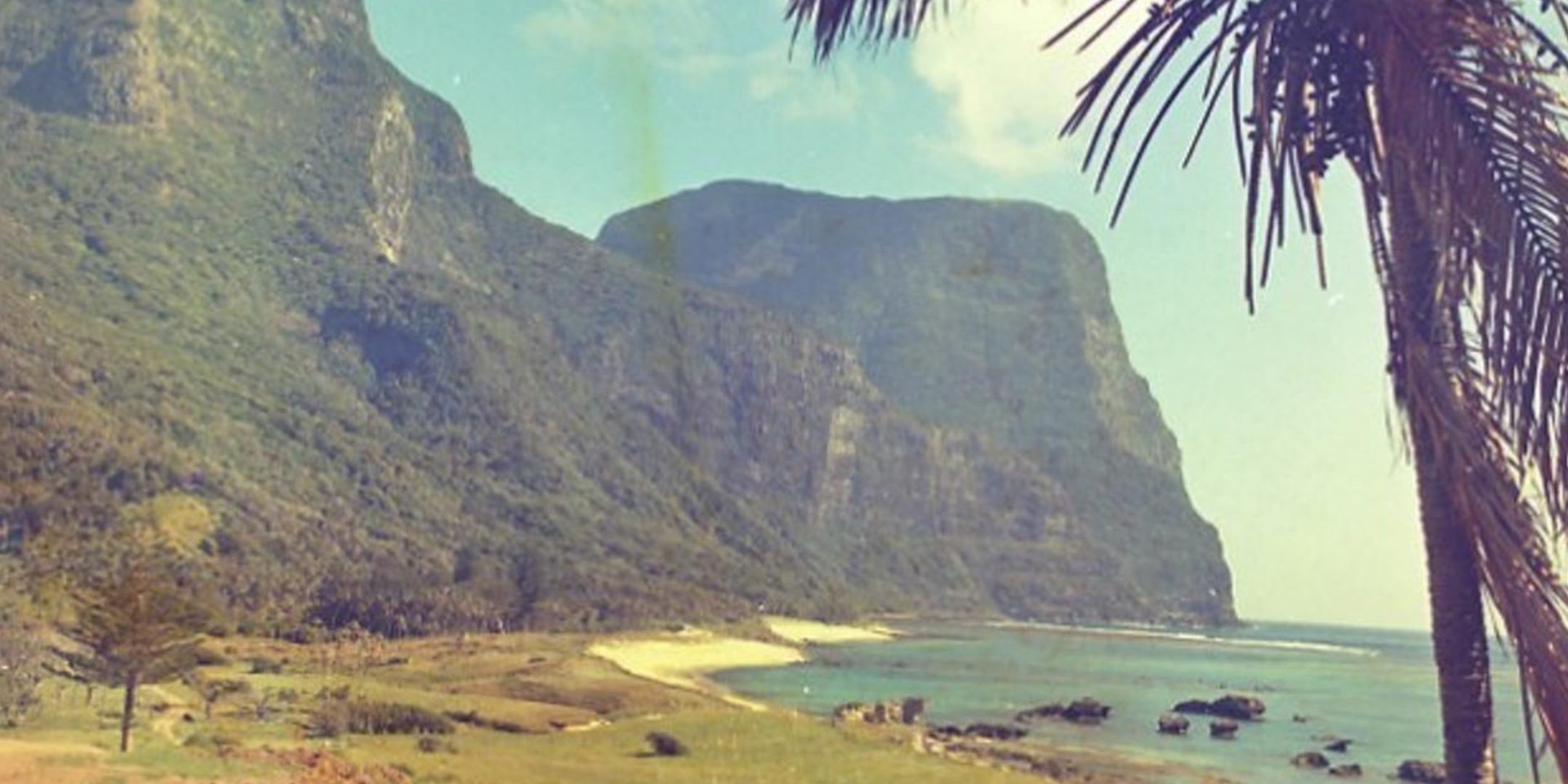
![Lord Howe Island, c1951 ANMM Collection: object number 1404[004] by Gervais Purcell, courtesy of Leigh Purcell.](https://s3-ap-southeast-2.amazonaws.com/anmm-data/blog/2015/11/26/anms1404_004_bw-peopleplane.jpg)
Lord Howe Island, c1951 ANMM Collection: object number 1404[004] by Gervais Purcell, courtesy of Leigh Purcell.
Taken on assignment for Ansett Airways, these images from the brief years of the Australian flying boats are doubly significant because they mark the advent of colour photography.
![A view of Mount Gower and Mount Lidgbird on Lord Howe Island. ANMM Collection: object number 1404[245] by Gervais Purcell, courtesy of Leigh Purcell.](https://s3-ap-southeast-2.amazonaws.com/anmm-data/blog/2015/11/26/anms1404_245lordhowecolour627x627.jpg)
A view of Mount Gower and Mount Lidgbird on Lord Howe Island. ANMM Collection: object number 1404[245] by Gervais Purcell, courtesy of Leigh Purcell.
The tourism industry was well placed to harness the photogenic potential of exotic landscapes in a world beginning to transmit colour.
![The view from North Bay, Lord Howe Island. ANMM Collection: object number 1404[239] by Gervais Purcell, courtesy of Leigh Purcell.](https://s3-ap-southeast-2.amazonaws.com/anmm-data/blog/2015/11/26/anms1404_239lordhowecolour800pxwide.jpg)
The view from North Bay, Lord Howe Island. ANMM Collection: object number 1404[239] by Gervais Purcell, courtesy of Leigh Purcell.
The first sea-plane to arrive on the island was in 1931. You can read about that aviation expedition by Francis Chichester on the Lord Howe Island Museum website.
Flying boats are distinguished from sea-planes by their boat-like hulls that can rest in the water, and the pilots of both types of craft needed good nautical skills to manage the changing conditions of wind and sea when afloat.
![Ansett Airways’ flying boat Beachcomber, Sydney Harbour c.1951. ANMM Collection: object number 1404[011] by Gervais Purcell, courtesy of Leigh Purcell.](https://s3-ap-southeast-2.amazonaws.com/anmm-data/blog/2015/11/26/anms1404_011beachcomber.jpg)
Ansett Airways’ flying boat Beachcomber, Sydney Harbour c.1951. ANMM Collection: object number 1404[011] by Gervais Purcell, courtesy of Leigh Purcell.
At the time, Australians were listening to the songs of Perry Como and Bing Crosby, and learning about Christian Dior’s New Look Parisienne fashions.
When TOA and Qantas ceased the Lord Howe Island route three years later in 1950, Ansett filled the niche and offered up to six flights a week from Rose Bay, each way a three-hour trip.
There were three air-craft: Beachcomber, Pacific Chieftain and Islander. All were Sandringham type. Beachcomber, which features in Gervais’ photographs, was originally built in the UK as a Sunderland (1943) and was converted by Ansett to a Sandringham. Pacific Chieftain suffered severe storm damage twice in 1964 and was replaced by Islander.
By 1974 the production of flying boats had diminished. Parts were expensive and technology and times were moving on. A land airstrip was constructed on Lord Howe and Qantas brought in modern planes to carry larger numbers of people from Sydney and beyond with greater speed. Stevie Wright replaced Perry Como and Bing Crosby in the Australian music charts, and Jenny Kee and Linda Jackson’s fashions were setting the new mode.
When Beachcomber and Islander left Lord Howe for the last time in 1974, the brief golden age of Australian aviation shimmered into history.
![Touch down or take off? A flying boat at Lord Howe Island c. 1951 ANMM Collection: object number 1404[001] by Gervais Purcell, courtesy of Leigh Purcell.](https://s3-ap-southeast-2.amazonaws.com/anmm-data/blog/2015/11/26/anms1404_001_bw_propellers.jpg)
Touch down or take off? A flying boat at Lord Howe Island c. 1951 ANMM Collection: object number 1404[001] by Gervais Purcell, courtesy of Leigh Purcell.
Both planes were intended for a tourist service carrying passengers between New York and the Virgin Islands. While this vision never came to pass, it is said that Blair and O’Hara flew Southern Star frequently and that a seat was added to the flight deck especially for O’Hara. When Blair died in 1978 the flying boats fell into disrepair and were eventually sold to cover debts. Excalibur was sold privately and is thought to have eventually made its way into an American aviation collection. Southern Star was bought by the Science Museum in the United Kingdom and was prepared as the centrepiece of the Solent Sky Museum at the Southampton Hall of Aviation. When the museum opened in May 1984, Beachcomber reappeared restored to name, body and interior in the Ansett colours.
If you’d like to know more about the golden age of Australian aviation beyond the flying boats, you can read this interesting article by the late Warwick Abadee (1935–2015), one of this museum’s founding members and longest-serving volunteers.
For more stories on our collections, subscribe to the Australian National Maritime Museum’s blog.
-Gemma Nardone


